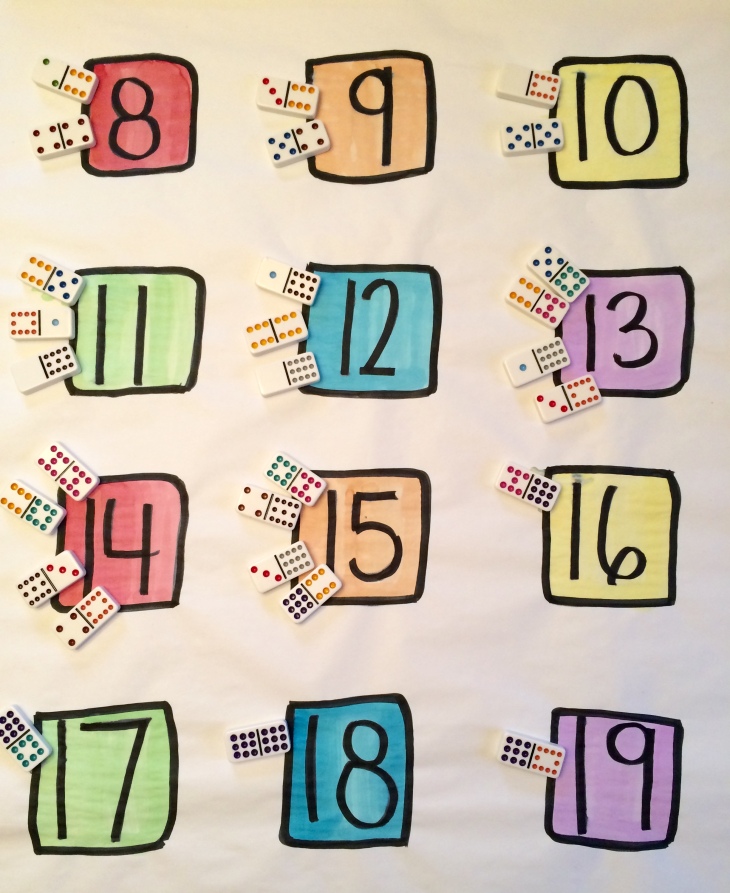I’m still searching for ways to differentiate in small ways that take just a second or two. An activity that is tiered is something that is leveled differently. A true tiered activity means that there are two (or sometimes more) options that account for a different level of thinking. Not everything can be tiered, but some basic math skills can be tiered quite easily. Here is an example.
I saw this post on Pinterest the other day for a primary classroom. So easy and so creative!
This is an awesome activity for students that are just starting out with numbers and subtilizing. But what about that small group of kids that the K-1 teacher doesn’t have time to differentiate for? Well, I think that the answer is all about having the right materials, in this case more advanced dominoes. I pulled this together for my kindergartener at home and we had a blast doing it. (Hello 20 minutes of math play!)
I think if we systematically think about what the next “level” of some of those basic math skills are, we can slowly incorporate the correct materials into our centers, our assignments and our games. In this way we ensure all students are making growth!



